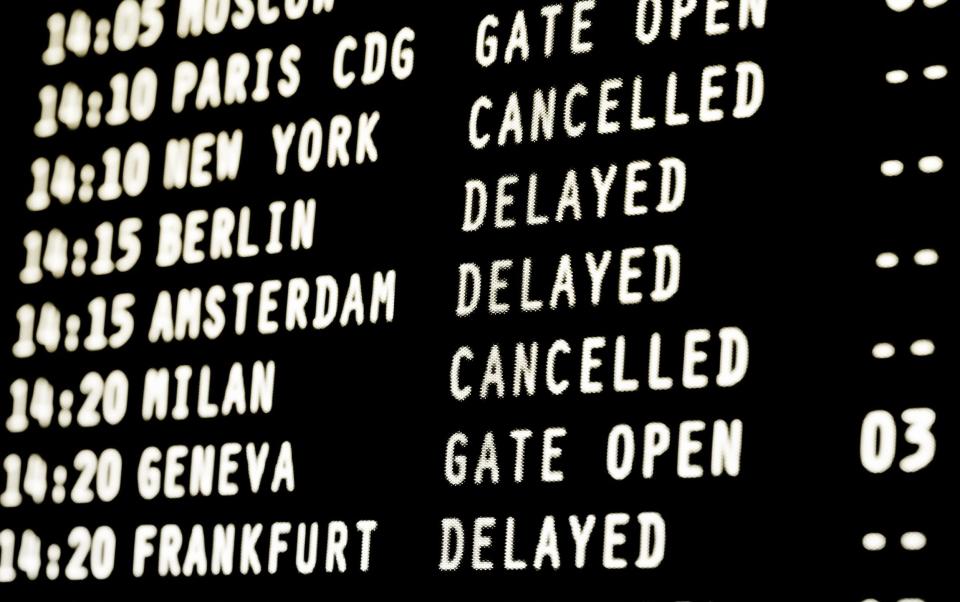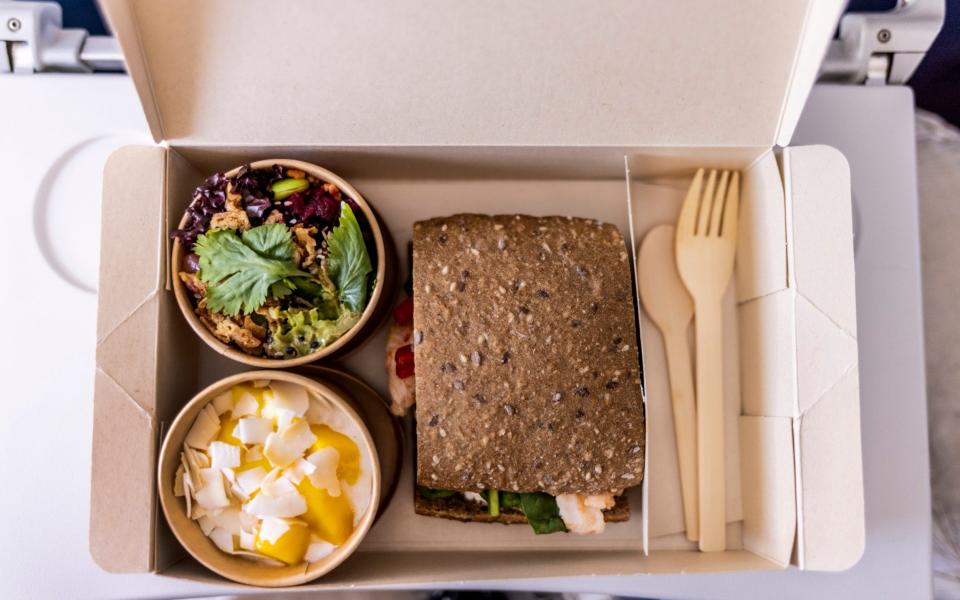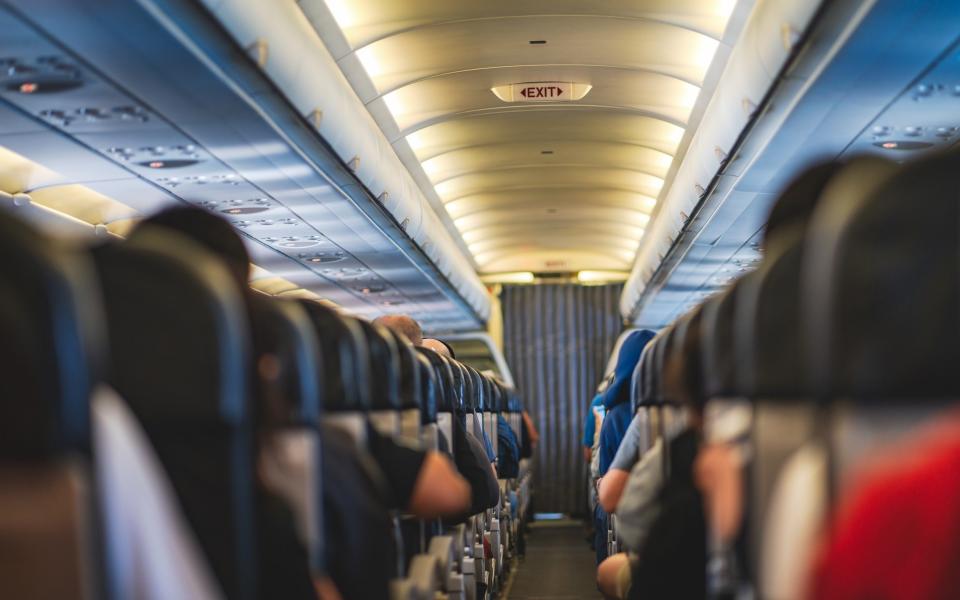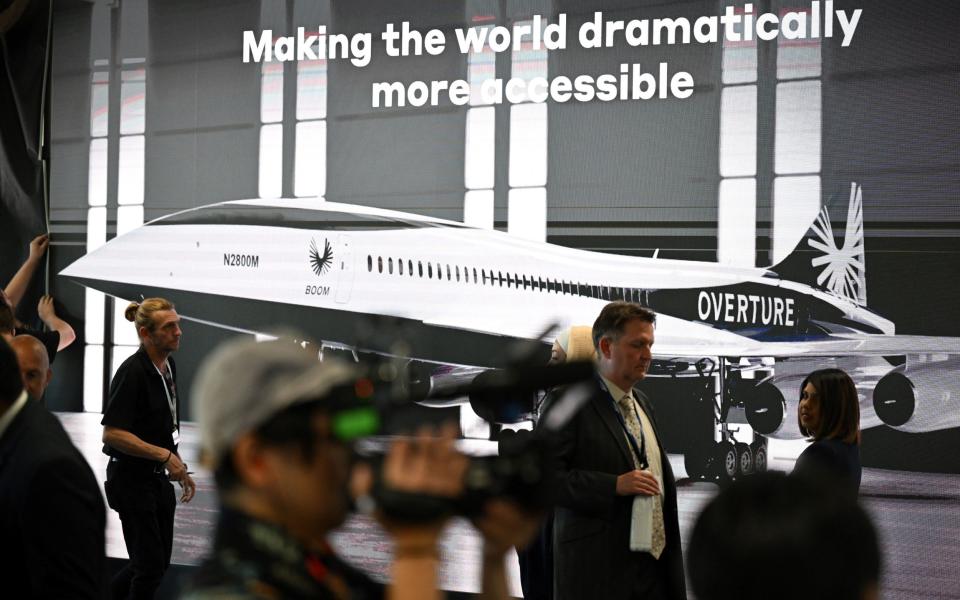As France bans some short-haul flights, will the UK be next?

France has formally banned domestic flights on routes that can be completed by train in less than two-and-a-half hours, in an attempt to move closer to its Net Zero targets.
The measure was proposed in 2021, but has only just come into force after a European Commission investigation into whether the move was legal.
Affected routes will largely be between Paris-Orly and regional hubs, like Bordeaux, Lyon and Nantes, but more routes could be added in the future.
Critics have described the bans as “symbolic”. Laurent Doncell, head of Airlines for Europe (A4E) told AFP news agency that “banning these trips will only have minimal effects” on overall CO2 output.
France isn’t alone in clamping down on short-haul flights. The Austrian government has introduced a special €30 (£26.50) tax on domestic flights covering less than 217 miles (350 km), and all flight routes with a rail alternative of three hours or less were prohibited.
International flights will be affected by Net Zero targets, too. In 2021 the European Commission announced plans to start taxing jet fuel used on intra-European routes, a policy which will make flight tickets increasingly expensive in the coming years.
However, the UK government has made steps in the other direction by halving Air Passenger Duty on domestic flights (from £13 to £6.50, as of April 1, 2023), a move which encouraged Ryanair to step up flights between Stansted and Edinburgh, among other routes.
The biggest airlines have signed a united pledge to reach Net Zero by 2050. Which will be no small task, for a kerosene-fuelled industry which is forecast to grow, not shrink, in the coming decades. So how will this be achieved?
In the future planes will be built from lighter materials and powered by sustainable fuel, elements which won’t have a significant bearing on the passenger experience. Fully electric passenger flights are some way off yet.
Those are the macro changes. But airlines are quietly rolling out smaller initiatives that are affecting the in-flight experience. Weight-saving exercises such as the end of physical in-flight magazines, for example, or strides to cut down on single-use plastics.
But even bigger shifts, from the end of night flights to a rise in clear-air turbulence, could be on the horizon. Here are 10 ways the flying experience could change in the next decade as the industry tries to clean up its act, and the Telegraph’s verdict on each one.
Already happening
Plastic cutlery is out

A number of airlines have ditched single-use plastics, such as cutlery and toothbrushes, and replaced them with reusable or recyclable alternatives. Etihad pledged to reduce plastic by 80 per cent across all services by the end of 2022, introducing recycled blankets and stainless steel cutlery. Thomas Cook, easyJet, Ryanair, British Airways and – in fact – just about every airline that you’re likely to fly with, has made a similar pledge. Perhaps in the most extreme case, in 2019 Air New Zealand trialled serving coffees in vanilla-flavoured edible cups.
Verdict: A positive step that everyone can get behind, even if the overall climate impact is negligible compared to the enormous emissions caused by the flight. Some airlines have used their plastic policy as fuel to make disingenuous claims of being a “sustainable” or “green” carrier.
No more in-flight magazines… and fewer olives
More on-board weight equals more fuel. So in a bid to cut down the kilos, Finland’s flag carrier Finnair has scrapped physical in-flight magazines, while during the pandemic British Airways turned its High Life magazine into a digital edition (though some printed copies are still available in the lounge). The notion of stripping back the in-flight offering dates back to the 1980s, when American Airlines removed one olive from each salad served. Over the course of the year this reputedly saved the airline $40,000.
Verdict: Many passengers still enjoy the offline element of an aircraft, and no doubt some will miss flicking through an in-flight magazine. But if we’re looking at reducing on-board weight, most passengers will rather it comes from printed mags than baggage allowances or food and drink offerings.
Pee before you board
All Nippon Airways (ANA) was ahead of its time, clearly. Back in 2009 when Richard Branson was turning Kate Moss upside down to celebrate Virgin Atlantic’s 25-year anniversary, the Japanese airline was making brave strides to reduce the weight (and therefore, fuel usage) on its flights. How? For a trial period, ANA staff encouraged passengers to make a final visit to the toilet before boarding. The logic being that the accumulative full bladders of 216 passengers could add up to 240 pounds of on-board weight.
Verdict: What next? Discounts for thinner passengers? Haircuts before you board? We can’t see this one catching on. (Although Samoa Air did for a period charge passengers based on their weight: the airline folded in 2015.)
Three to five years
New routes to dodge worsening turbulence

The most unpredictable type of turbulence is known as “clear-air turbulence”. It is caused by sudden changes in wind speed and direction, known as wind shears, and cannot be seen or easily detected from the cockpit. Worryingly for nervous fliers, some climate scientists, such as Paul Williams of the University of Reading, believe that rising global temperatures and greenhouse gas emissions are making clear-air turbulence more common. Should a trend develop, it could see airlines choosing altered routes that avoid the bumpiest zones, or passengers encouraged to wear seatbelts for the entirety of their flights.
Verdict: In future decades new technologies will help pilots to detect clear-air turbulence, allowing them to avoid it where possible. This may lead to more convoluted flight routes, however, which would mean increased fuel consumption – something that will be harder to justify, as the Net Zero 2050 deadline draws closer.
Choose your meal before you fly
Food waste, and the weight of onboard food, is a big problem in aviation. Around 20 per cent of in-flight food is returned untouched, amounting to six million tonnes per year. Some airlines are doing their bit to cut down. On Japan Airlines (JAL) you can now tick a “no food” option when booking your ticket (though you won’t receive a discount for doing so), and airlines go to great lengths to calculate the quantities of food required for each flight.
But despite their sophisticated algorithms, nearly all airlines still over-order food to ensure passengers don’t go disappointed. The solution may be to pick your meal before you fly: “It would be a lot better if people could choose from a menu, say 30 days before the flight, in enough time for an exact order to be made with the catering companies,” says Gilbert Ott, frequent flier and creator of the air travel blog God Save the Points.
Verdict: Given that we already have to choose things like our baggage allowance, priority boarding and our seat number, it wouldn’t be a great inconvenience to pick a meal from a drop-down menu when you book your ticket, especially if it guarantees you get what you want.
The end of night flights
Amsterdam Schiphol has recently published proposals to limit night flights from the airport in a bid to cut air and noise pollution. The ban would affect aircraft taking off between midnight and 6am, to reduce “the number of people experiencing noise nuisance” and cut flight numbers by up to 10,000 per year. They are also moving to ban private jets. KLM and a number of other airlines are challenging the night flight decision, so it is yet to be seen whether Schiphol will hit its target of 2026.
Verdict: Some airports, such as Zurich, have imposed a night flight ban, but this is unusual. The UK imposes caps on night flights from some airports, such as Heathrow, between 11.30pm and 6am, but it is unlikely we will see an outright night flight ban catching on given the rising demand for air travel forecast in the coming years and decades (the most recent estimates suggest a 4.3% rise per year for the next 20 years, according to the International Civil Aviation Organization).
The end of air miles
There is something contradictory about airlines pledging to reduce emissions, while simultaneously rewarding the passengers who fly the most. Some campaigners argue that a levy on frequent flyers is the way forward. No airlines have scrapped air miles in the name of appearing more “green”, although some – such as Flying Blue (Air France, KLM, and more) – allow you to spend miles on reforestation projects or purchasing Sustainable Aviation Fuel for your carrier.
Verdict: In reality, most frequent fliers are business travellers, and it is unlikely that they will stop hopping from city to city any time soon. While the principle of air miles is jarring, scrapping it won’t make an enormous difference in the pursuit of Net Zero in aviation. It is likely that schemes will continue to give more green ways to spend your miles in years to come.
Flights on green airships
The UK-based Hybrid Air Vehicles is developing a fleet of airships, or hybrid aircraft, which will be able to carry up to 100 passengers at speeds of 100mph. Spanish carrier Air Nostrum has put in an order for 2026, and a number of luxury cruise operators are in talks. Already the aircraft produces between 75 and 90 per cent less emissions per passenger than a plane, but they also have the capacity to be run by electrical motors and hydrogen fuel cells, which could make it a truly zero carbon mode of transport.
Verdict: The Airlander will offer an exciting and greener alternative to short-haul flights, but will be slow and therefore best utilised for clean expeditions, allowing passengers to witness the northern lights from the sky or go on a floating safari.
10 years and beyond
Better views thanks to lower altitude flights
Much of the conversation around aviation’s climate impact revolves around the development of green fuels and electric engines, but plane contrails – those white cloud-like streaks – contribute around 14 per cent to aviation’s heating effect. One way to prevent contrails, according to a study by scientists at Imperial College London, would be to fly lower or higher to avoid the thinner areas of the atmosphere where contrails form.
Verdict: The Imperial scientists behind this describe the conversations as in “very, very early days,” but it is surely a suggestion that airlines will take seriously. One bonus being that passengers will be able to enjoy better views if flying at lower altitudes.
The return of the supersonic flight

In 2021 United Airlines put in an order for 15 Overture aircraft designed by Boom Supersonic. The supersonic jet will operate on 100 per cent sustainable aviation fuel (SAF) and the first passenger flights are set to take off in 2029, all going well. The jets will carry between 65 and 88 passengers at 1,300 mph (faster than the speed of sound), and will be able to cross the Atlantic in under four hours.
Verdict: It is an exciting prospect, although no Overture airline has taken flight yet and the first flight is scheduled for 2026. So it might be worth reserving judgement until we have seen the Overture take to the skies.

 Yahoo Sports
Yahoo Sports 